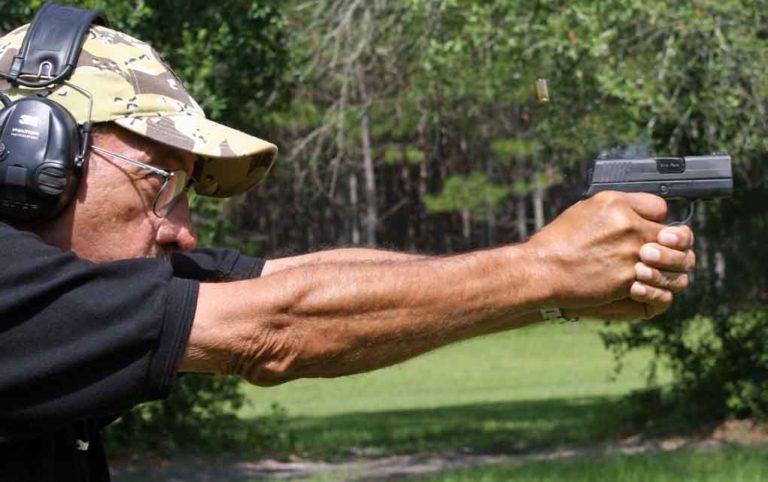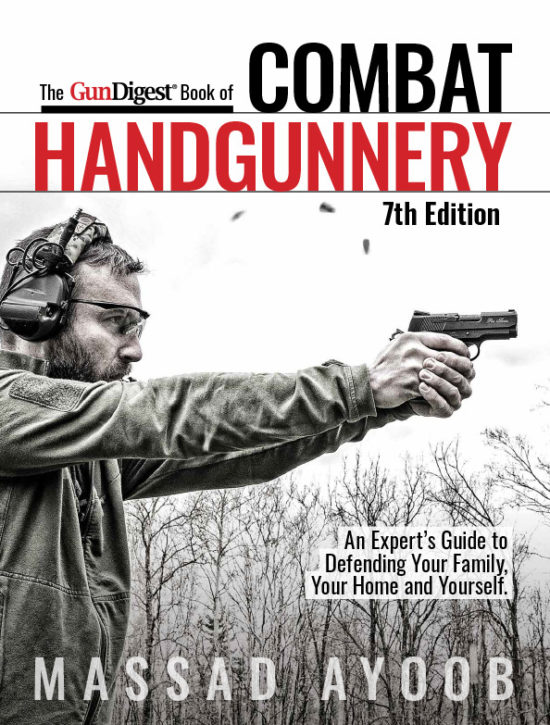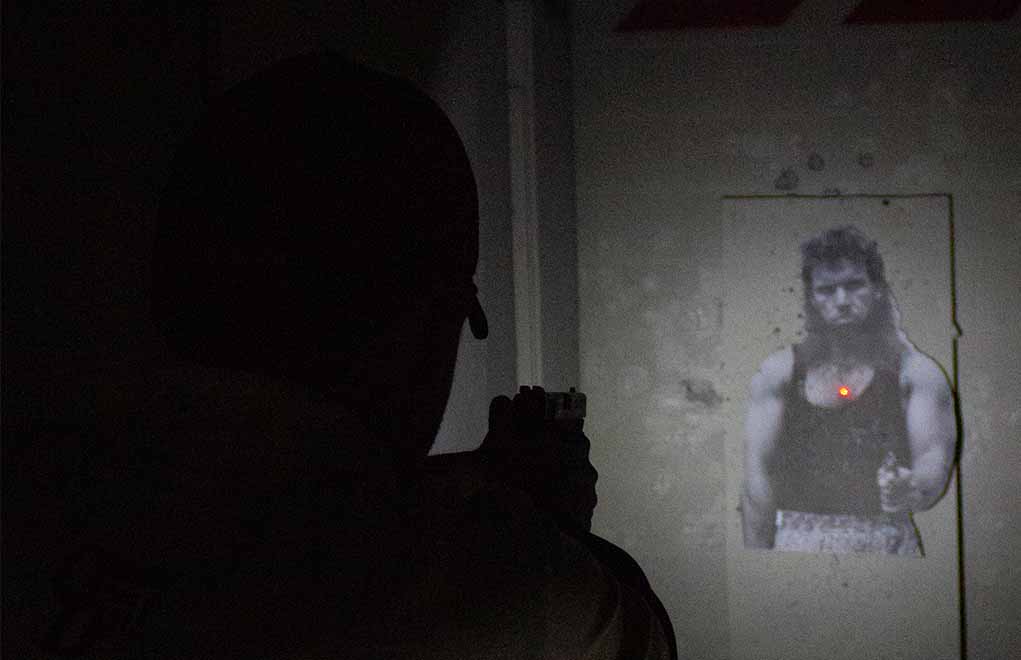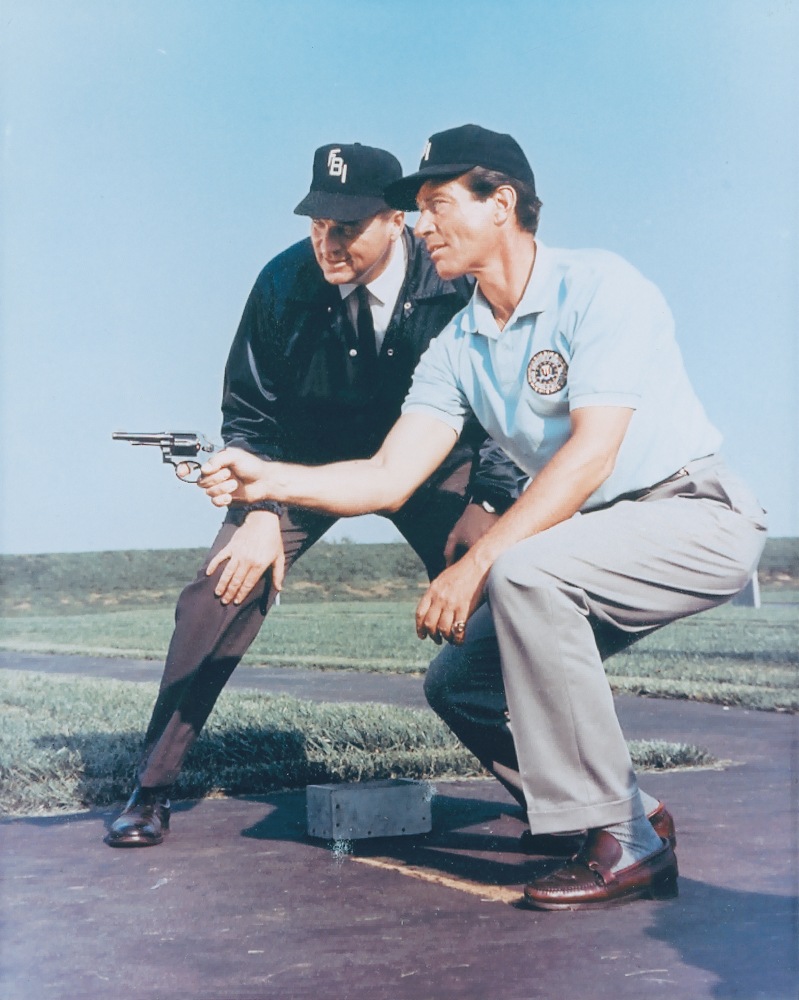
Ineffective and potentially dangerous, point shooting should be avoided at all costs and aimed fire employed in any lethal-force scenario.

For more than a decade, this is a topic that has been guaranteed to not only sell gun magazines, but to generate a flurry of angry letters to the editors. Gun expert Dave Arnold was the first to make a key point about it. “A lot of this argument,” Dave said, “is simply a matter of terminology.”
As one who has been in or around the center of that debate since 1990, I’ll certainly buy that! Let’s see if we can’t quantify our terms at the very beginning so we’re all working off the same sheet of music.
Two concepts need to be understood first: index and coordinates. Index is what lines up the gun with that which is to be shot. Coordinates are the things we have to accomplish to achieve index.
There are perhaps three possible indices by which we can line up our gun with the target or the threat:
Body Position Index: This would be the situation where you can’t see where the gun is aimed, so you’re using a certain body position to align the gun with the target. In the obsolete FBI crouch, the coordinates are backside low, upper body forward, gun punched forward to keep it from going too low. In the speed rock, discussed elsewhere in this book, the coordinates include leaning the upper torso all the way back to bring the forearm lateral as the gun is fired immediately upon levering upward away from the holster. In pure hip-shooting, you are relying on either long-term muscle memory developed through exhaustive practice, or by a degree of talent few of us could ever hope to possess. I would define any type of body position index as “point shooting.”
Visual Index: This is where you are indexing by seeing the gun or the gunsights superimposed on the target. If you can see the gun is on target, I consider this aimed fire. Whether you are superimposing the silhouette of the whole gun over the target, or looking over the top of it, or taking a classic sight picture, the only question remaining is whether it’s coarsely aimed fire or precisely aimed fire.
Artificial Index: This would be something like a laser sight. Let’s say you have a ballistic raid shield in one hand, and a gun in the other. It will be awkward and difficult to bend the arm into a position where you can aim through the Lexan view port using the regular sights. If you reach your gun around the side of the shield and see your red dot on target, the artificial mechanism of the projected laser dot has indexed the weapon for you, rather than you visually aligning the gun or aligning it by body position index.
Since the laser sight is by no means universal, this argument of point shooting versus aimed fire really comes down to an issue of body position index versus visual index.

The middle-road position is, “practice both.” That saves controversy, but if you’re teaching cops or others with limited time who can’t waste even minutes on useless stuff because you don’t have as much time as you need to give them key life-saving skills, you can’t afford to have controversy any more. A great many police departments have either gotten away from point shooting entirely, or they have given it very short shrift. The reason is that their cops get into a lot of shootings, and they can quickly find out what works and what doesn’t. Departments that have learned to re-emphasize sighted combat fire include LAPD and NYPD, to name but a few. Both saw a significant jump in hit percentages in actual gunfights after renewing their emphasis on visually indexing the duty sidearms.
A book could be written on this topic — some have been, and more will be — but let’s cut to the chase. The bottom line is this; a lifetime of studying real-world gunfight dynamics has taught this author that true point shooting simply doesn’t work, except for a handful of extremely skilled and highly practiced shooters.
Get More Concealed Carry Info:
- 16 Top Picks For Concealed Carry Handguns
- Best Concealed Carry Weapon for a Woman
- 9 Standout Concealed Carry Revolvers For Personal Defense
- 6 Top Micro 9mm Handguns For Everyday Carry
- 6 Concealed Carry Insurance Options To Protect Your Six
Problems with Point Shooting
Dennis Martin, the martial arts and small arms expert who for some time was Great Britain’s coordinator for the International Association of Law Enforcement Firearms Instructors, has little use for point shooting. He told me, “When the SAS had as their primary mission the eradication of enemy soldiers in combat, they taught point shooting with a high volume of gunfire. But as soon as their mission was changed to include hostage rescue, they switched from point shooting to Col. Cooper’s concept of the ‘flash sight picture.’ Now they had to shoot through narrow channels between innocent people, and it would have been irresponsible to do that without aiming their weapons.”
This is as clear an explanation of the problems with point shooting as I’ve ever seen. As an expert witness for the courts in weapons and shooting cases for more than 20 years, I realized early on that again and again, point shooting was culpable when the wrong people were hit by the good guy’s fire.

One case, a man “pointed” his .38 for a warning shot and hit, crippling for life, a man he said he was trying to miss. More common are people hitting those other than the ones they’re trying to hit. I was retained on behalf of one police officer who “point-shot” at the tire of a car that was going toward a brother officer and instead hit in the head and killed a person inside the vehicle. I was retained on behalf of another who, at little more than arm’s length from a murderer trying to shoot him, resorted to the point shooting he had been taught and missed with all but one shot. The one hit, almost miraculously, nailed the bad guy in the arm and cut the radial nerve, preventing his attacker from pulling the trigger. But one of his misses struck, and horribly crippled for life, an innocent bystander — one of the potential victims the officer was trying to protect.
You don’t need too many cases like that to understand why true point shooting, firing without being able to see where the gun is oriented, can quickly pass the point of diminishing returns. Law school students are taught that the exemplar of recklessness is a “blind man with a gun.” A person who is firing a gun when they can’t see whether or not it’s on target is, in effect, a blind man with a gun. It could be eloquently argued in court that, ipso facto, firing without being able to see where the gun is aimed creates recklessness. In turn, recklessness is the key ingredient in the crime of Manslaughter and in a civil court lawsuit based on Wrongful Death or Wrongful Injury. Enough said?
Editor's Note: This excerpt is from Massad Ayoob's Gun Digest Book of Combat Handgunnery, 7th Edition, now at GunDigestStore.com.

Next Step: Get your FREE Printable Target Pack
Enhance your shooting precision with our 62 MOA Targets, perfect for rifles and handguns. Crafted in collaboration with Storm Tactical for accuracy and versatility.
Subscribe to the Gun Digest email newsletter and get your downloadable target pack sent straight to your inbox. Stay updated with the latest firearms info in the industry.

![Best Concealed Carry Guns In 2025 [Field Tested] Wilson Combat EDC X9S 1](https://gundigest.com/wp-content/uploads/Wilson-Combat-EDC-X9S-1-324x160.jpg)


![Best 9mm Carbine: Affordable PCCs [Tested] Ruger Carbine Shooting](https://gundigest.com/wp-content/uploads/Ruger-Carbine-Shooting-100x70.jpg)
![Best AR-15: Top Options Available Today [Field Tested] Harrington and Richardson PSA XM177E2 feature](https://gundigest.com/wp-content/uploads/Harrington-and-Richardson-PSA-XM177E2-feature-100x70.jpg)

To me, point shooting is lazy shooting. A gamble that you might just miss your target or get lucky and hit the wrong one.
I read a comment from a NYC police officer who was in a special unit with the greatest number so shootings. Two things stand out. First, he said that every person he shot he was looking at over the top of his front sight. Second, even in situations where they did not legally have to, his team tried to give a final warning before they shot. Killing a person, even a bad guy, is a load for most people to carry.
For my carry gun (RUGER LC9s) a laser sight is FAR superior. No need to align sights, just “acquire and shoot”.
Maybe for my RUGER 57 with its long sight radius and very flat shooting 5.7 x 28 cartridge I could see using iron sights. But I’m STILL getting a laser sight for it.
If you shoot, you’re going to be sued. My “police trainer” buddy, trained two officers and one non officer that were involved in shootings. All three got sued. Both officers suffered mentally, and left law enforcement. The civilian had to leave town.
The “police trainer” trained hundreds of officers. The shootings resulted in death of the “victim”*.
*Lawyer talk for armed thug.
With my Glock 17 I can do AIMED shooting.
With my RUGER LC9s carry gun WITH its Laser Max sight I do “Aimed/Point Shooting”. And It works very well for a small 9mm with a tiny sight radius.
I have the upmost respect for Mr. Ayoob’s perspectives on all aspects of handgun training. But he misses the point on non-sighted fire. What he misses is the fact that all of the missed shots he references are the result of poor non-sighted training. Anyone who has taken Jim Gregg’s training on non-sighted fire can easily shoot tighter groups in a faster sequence than sighted fire.
Very good explanation of the problems associated with and the potential legal repercussions of Point Shooting. I always enjoy Mr. Ayoob’s perspective on questions like this. Thank you sir, for an insightful article once again.